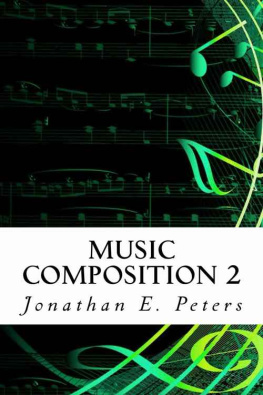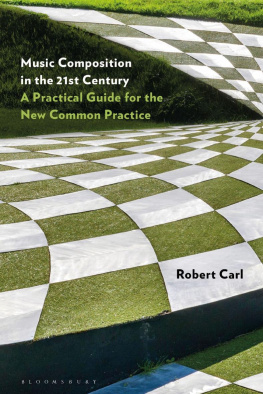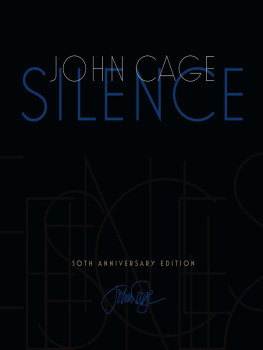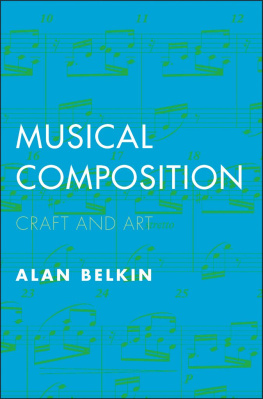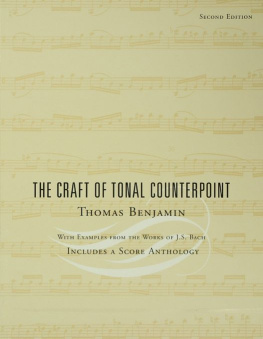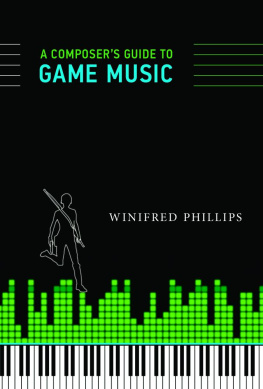1. TONAL FUNCTION
BEFORE WE BEGIN
This is the second course in a two course series on music composition.The first course, Music Composition 1, dealt with the study of rhythmicand melodic composition. If you have not taken Music Composition 1, itis highly recommended that you do so before taking Music Composition 2. MusicComposition 2 is divided into two portions. The first portion deals withthe study of harmonic composition. The second portion deals with the study ofcompositional form.
To get free life-time access to all of the audio samplesfor the diagrams in this book and also quizzes for each lesson, please go to:
https://www.udemy.com/musiccomposition2companion
Click on, Enter Password and enter 3b78fj4
Click on, Start Learning Now.
The next window will ask you to sign up for a Udemy account(if you do not have one already). Enter your name, e-mail address, and create apassword for your account.
Thats it!
CHORDS OF THE SCALE
If you have studied music theory then you know that music writtenin a key is built upon the notes of the scale. The notes of the scale are thepalette of pitches a composer can choose from to form a melody. They are alsothe notes the composer can use to form harmonies.
Using only the notes of the C major scale we can form thefollowing chords.

If a composer is writing a piece in the key of C major,these seven chords are the chords they will most likely use to harmonize theirmelodies and to construct their chords.
Note: It is possible for a chord to use pitches outside ofthe key, but right now we are only dealing with diatonic chords (chordsthat use only the pitches of the diatonic scale).
In this lesson we will look at three chords in particular:I, IV, and V. These chords are called the primary chords. It doesnt matterwhich notes of the scale we choose to form our melodies, they can all beharmonized with one of these three chords. The following diagram will help toillustrate this. The right hand consists of a C major scale. The left handconsists only of primary chords and harmonizes the scale.

(Lesson 01 - Audio 01)
DEPARTURE,ANTICIPATION & RETURN
When chords move from one to another in succession toward adefinite tonal goal it is called a chord progression. Many chordprogressions conform to the basic structure of departure, anticipation, andreturn. Departure is the moving away from the tonic, anticipation is theaural expectation of hearing the tonic again, and return is the coming backhome to the tonic chord. (The tonic chord is the I chord or root chord of thekey. It is the chord in which we feel at rest.) To achieve this structure ofdeparture, anticipation and return, at least three different chords areneeded; the tonic chord and two other chords.
The first thing needed is to establish a tonic. A singlechord by itself cannot establish a tonic since a single chord is ambiguous andcould be interpreted in a number of ways.

The F major chord in the preceding diagram could be anyof the following.
I chord(in the key of F major)
V chord (in the key of Bflat major)
IV chord (in the key of Cmajor)
VI chord (in the key of A minor)
If a single chord cannot establish a tonic, can a progressionmade up of only two chords establish a tonic? The answer isnot really. Aprogression of only two chords is still not enough to establish a tonic sincethere continues to be some degree of ambiguity as to which chord is acting asthe tonic. Take for example the following chord progression.

(Lesson01 - Audio 02)
It sounds like we might be in the key of F major and thatthe progression is a V (C major chord) moving to a I (F major chord). Theproblem is, without more musical context we really cant tell if we are comingor going. In other words, is the second chord the departure from the firstchord, or is the first chord the anticipation of the return to the secondchord? We therefore need at least three chords to establish a tonic.
Here is the preceding examplewith more musical context. What at first sounded as if it was in the key of Fmajor, is actually in the key of C major.

(Lesson 01 - Audio 03)
IV serves as the departure from the tonic, V sets upthe anticipation of the return to the tonic, and I is the return to thetonic. As you can see, not only can the primary chords harmonize any melodymade up from the pitches of the scale, they also provide the sense of harmonicmovement necessary to chord progressions. This brings us to the topic of tonalfunction.
Every chord has a tonal function. Tonal function is therole each chord plays in a chord progression. A chords tonal function isdetermined by the degree of the scale the chord is built upon.
There are three tonal functions: the tonic function,the pre-dominant function (also called the subdominant function), andthe dominantfunction.
The function of the tonic is to establish the key.
The function of the pre-dominant is to lead to thedominant.
The function of the dominant is to lead back to thetonic.
Each of the primary chords falls into one of thesecategories. The I chord obviously has a tonic function, the IV chord has apre-dominant function, and the V chord has a dominant function.
Note: This is not to say that every chord progression mustfollow the pattern: I - IV - V - I. Since this is a beginning course on musiccomposition, knowledge of the three basic tonal functions will serve as a greatfoundation and springboard for further study.
When a piece is written in a minor key, the primary chords(i, iv and V) have the same tonal functions as the primary chords inmajor keys. The V chord in the following example is major since we are usingthe pitches of the harmonic minor scale. (See Music Theory by theauthor)

(Lesson 01 - Audio 04)
We will learn more about tonal function and other types ofchord progressions in the coming lessons.
VOICE LEADING
Since this is a beginning course in music composition wewill not be covering more advanced topics such as four-part writing, open andclosed voicing, etc. We will however need to understand a few basic principles.One of these principles is the principle of voice leading.
Theoretically, any chord can move to any other chord. Thereare however certain elements that make some chord progressions more appealingthan others. One of these elements is the voice leading between chords.
The movement from one chord to another is actually at itsfoundation melodic in nature. To understand this we first have to understand

